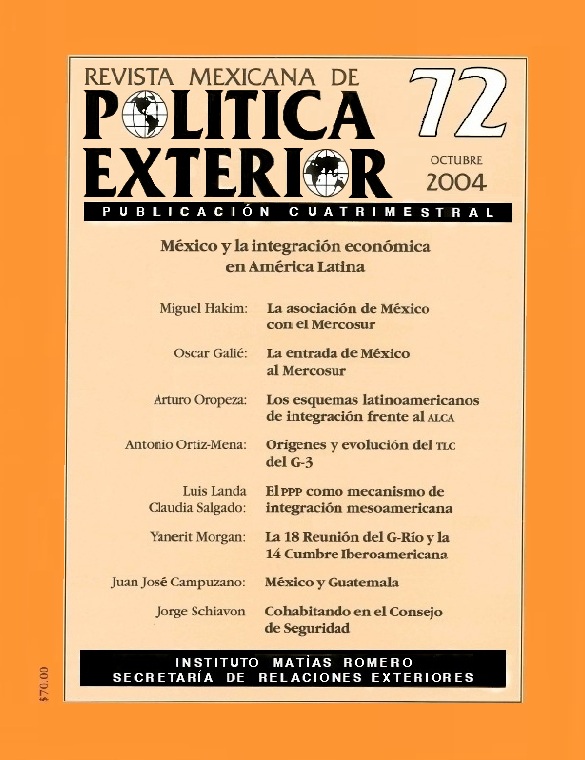El Plan Puebla Panamá como mecanismo de integración mesoamericana. ¿Qué es, qué no es y en dónde estamos?
Contenido principal del artículo
Resumen
In this article, the authors take note of the long history of regional cooperation between the countries of Mesoamerica, which provided a precedent to the Puebla-Panama Plan (PPP) —launched on June 15, 2001 in San Salvador, within the framework of the Extraordinary Summit on the Tuxtla Dialog and Agreement Mechanism—. Luis Landa and Claudia Salgado address some of the myths and realities associated with the PPP, and explain how it functions as a mechanism for dialog between government, business and civil society sectors, aimed at dealing with issues related to cooperation, integration and economic development, including the implementation of projects of regional interest. The PPP, they say, revolves around two strategic focal points: human development, and productive integration and trade, which are in turn divided into eight Mesoamerican initiatives, each of which has been entrusted to one member country. The Plan gives priority to highway infrastructure, energy and telecommunications projects, which are fundamental to the carrying out of projects contemplated in other Mesoamerican initiatives. The authors conclude that the PPP is geared toward fulfilling the Millennium Goals and promoting the productive integration of the region, reason why, among its other objectives, it needs to consolidate its achievements and continue to identify issues that are crucial to the viability and prosperity of Mesoamerican countries in the 21st century.

